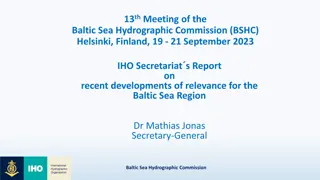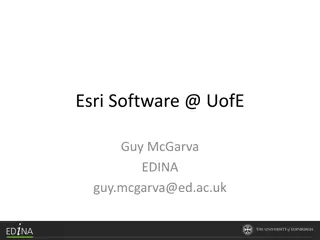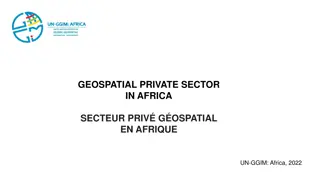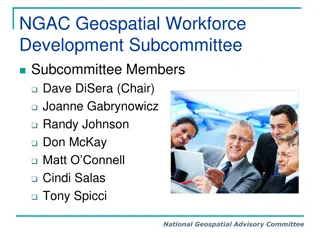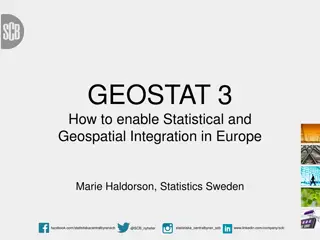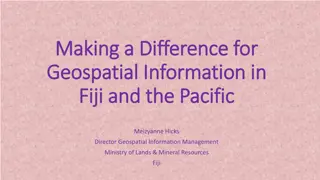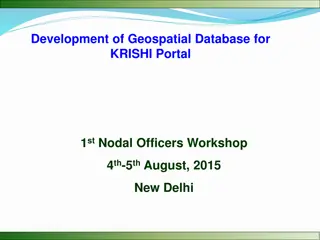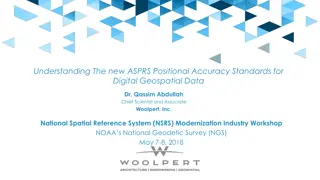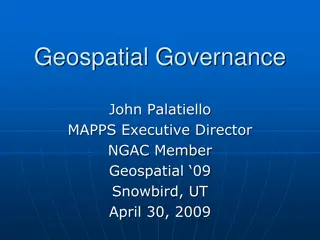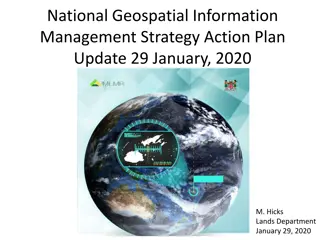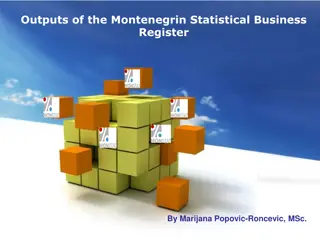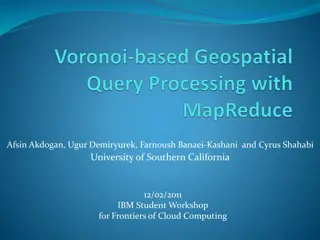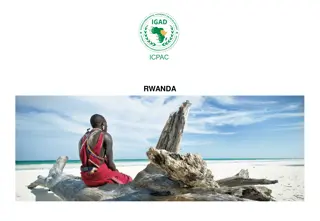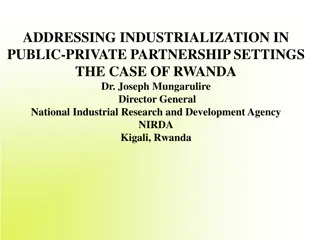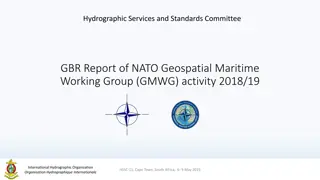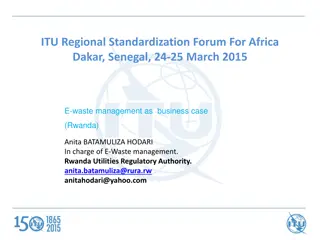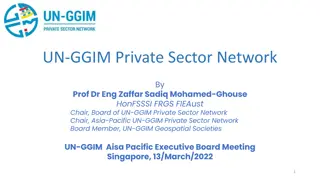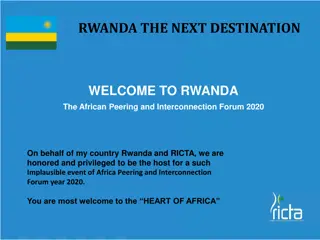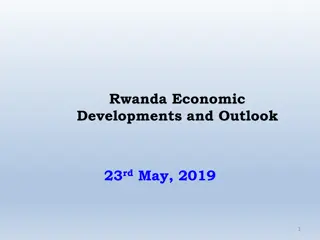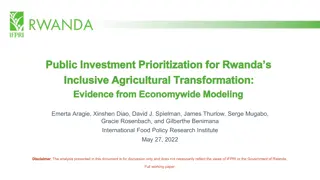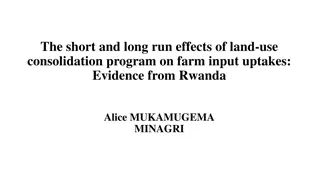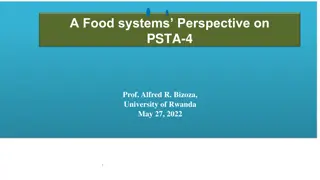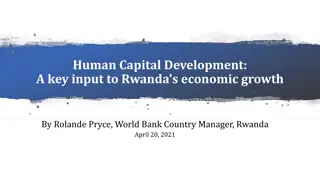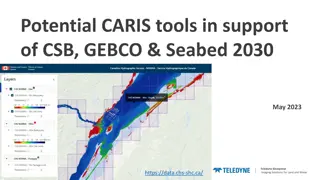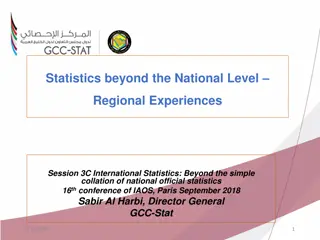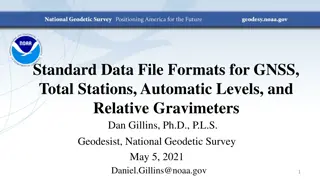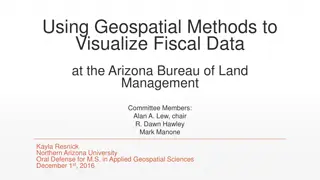Geospatial and Statistical Data Integration in Rwanda: A Closer Look at RCMRD's Role
Explore the evolution of geospatial and statistical data integration in Rwanda, focusing on the initiatives led by Dr. Emmanuel Nkurunziza, General Director of RCMRD. Discover how advancements in geospatial technologies and statistical systems are shaping sustainable development in the region.
Download Presentation

Please find below an Image/Link to download the presentation.
The content on the website is provided AS IS for your information and personal use only. It may not be sold, licensed, or shared on other websites without obtaining consent from the author. Download presentation by click this link. If you encounter any issues during the download, it is possible that the publisher has removed the file from their server.
E N D
Presentation Transcript
Geospatial and Statistical Data Integration Dr. Emmanuel Nkurunziza Director General
Outline I. I. II. II. III. III. Statistics in Rwanda Statistics in Rwanda IV. IV. Geospatial data development in Rwanda Geospatial data development in Rwanda V. V. Integration Integration About RCMRD About RCMRD Evolution of Rwanda s geospatial and statistics systems Evolution of Rwanda s geospatial and statistics systems
About RCMRD The Regional Centre for Mapping of Resources for Development (RCMRD) was established in 1975 under the auspices of the United Nations Economic Commission for Africa (UNECA) and the African Union (AU), previously known as the Organization of African Unity (OAU). Our Mission: To promote sustainable development through generation, application and dissemination of Geo-Information and allied Information Communication Technology (ICT) services and products in the Member States and beyond. Our Vision: To be a premier Centre of Excellence in the provision of Geo-Information services.
Geographical Coverage RCMRD Fact Sheet - Centre is 43 years old this month - Inter-governmental, with 20 member states - Supports Member states specifically in development of the geospatial and earth observation capabilities
General view of Data integration in the region Situation in most Member states in terms of statistical & geospatial data integration similar with exception of more advanced economies like S. Africa Development and management of statistical and geospatial data invariably separate under different institutions with adhoc coordination; The presentation here will use the case of Rwanda primarily because I understand it best, having been a central participant in the geospatial development in the country for close to 10 years as head of the country s Natural Resources Authority
Statistical & Geospatial Data in Rwanda Development of statistical & geospatial data evolved independent of each other out of immediate pragmatic needs for each Following adoption of the country s Vision 2020 in the year 2000, the subsequent years focused on developing sectoral policies and institutions to deliver it;
National Statistical system Law on organization of statistics activities in Rwanda was enacted A National Institute of Statistics of Rwanda (NISR) was set up in 2005 as main body to generate and manage national statistics Development of National Statistical system (NSS) - ensemble of institutions Initial focus of NISR was on production of mandatory statistics such as GDP, CPI, PPI, external trade figures etc but later started working on special purpose statistics such as DHS, Agric statistics etc National Strategy for the Development of Statistics in Rwanda (NSDS); with 5 year cycles - now implementing second cycle NSDS 2
National Statistical system Increasingly geospatial information became important to NISR particularly when they undertook population census, with need to map enumeration areas & admin boundaries NISR tried to build in-house capacity to generate essential geo-data & the mapping institutions remained outside the NSS Collaboration between NISR and mapping institution remained adhoc, informal and reliant on individual goodwill
Geo data development (1) Started with promulgation of a national land policy in 2004 covering aspects of mapping & management of geo-information. This was followed by a land law in 2005 and establishment of the National Land Centre in 2007 that brought together all mapping functions that were scattered in different institutions National Land Centre began process of developing key geospatial information aerial survey of the country generated high resolution of orthophotos. A new base map developed as well as National Land use & development master plan
Geo data development (2) Development of national land use master plan required many sets of statistical data that necessitated close collaboration between the National Land Centre & NISR The new base map and high resolution orthophotos became a template over which other geospatial & statistical data were developed; The Land tenure regularisation programme undertaking by the Land Centre between 2009 & 2013 to demarcate, map and register all parcels in the country produced arguably the largest set of both geospatial & statistical data in one go. The Land parcels data brought in a unique identifier (UPI) for each of the over 11 million parcels in the country that has now become an integrating element for most statistical data is made more meaningful by the geospatial/location dimension
Statistical & Geospatial Data integration (1) Establishment of the Land administration Information system that integrates cadastral data with other data pertaining to owners and others with interest This system is electronically connected to other key national registries e.g. National ID, taxation, mortgage registration, business registration etc Specifically the connection of National ID (unique identifier of persons) and parcel data (with unique parcel identifier) has provided huge opportunity for generating all sorts of statistical reports/data While statistical data continued to be coordinated under the NSS, similar efforts under NSDI is trying to bring together management of geodata
Statistical & Geospatial Data integration (2) Joint activities between the geodata side and statistics have increased e.g the ongoing Natural capital accounting in which land accounts were recently published A national geoinformation coordination committee has also been set up & NISR and the mapping institutions are the key drivers National data revolution policy recently approved by Cabinet provides more possibility for this coordination
Way forward for the region Developments towards integration described for Rwanda apply to most countries in Eastern & Southern Africa UN-GGIM efforts around GFDTs should help focus and give impetus to national & regional initiatives Different countries can develop implementation roadmaps for the GFDTs, identifying most priority themes & investing accordingly.
Thank you! www.rcmrd.org



